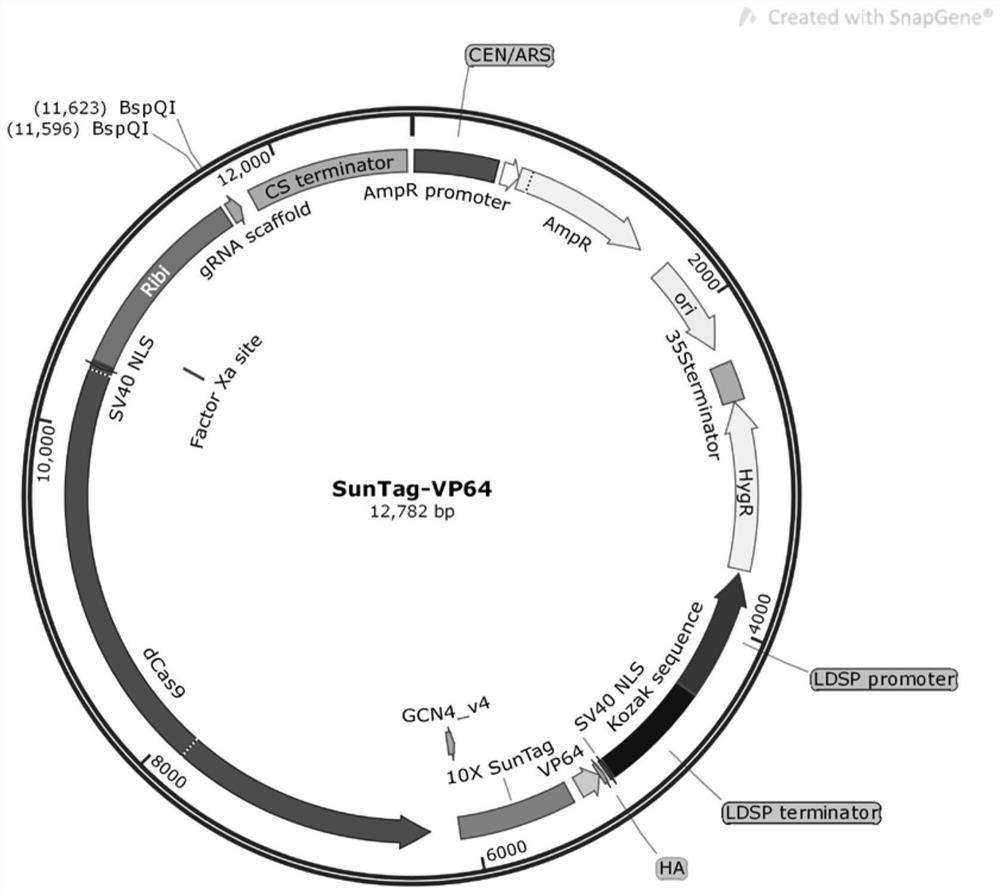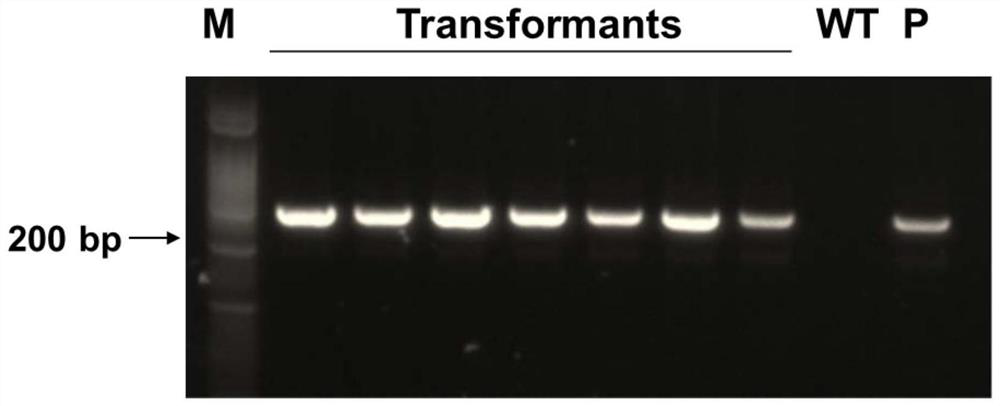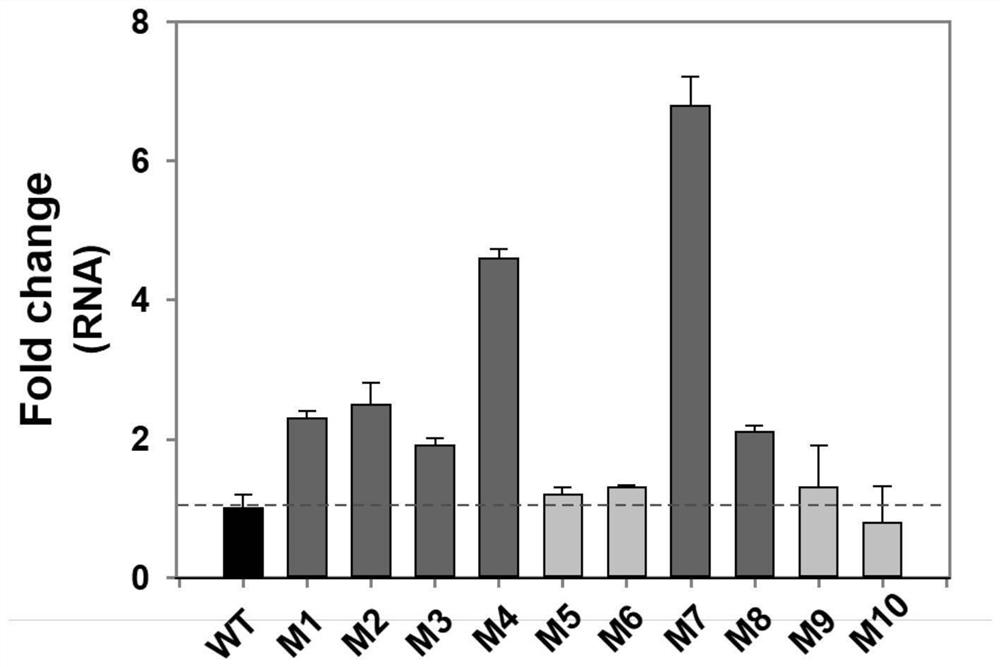Construction and application of marine nannochloropsis oculata transcriptional activation CRISPRa system
A marine Nannochloropsis, transcription activation technology, applied in applications, microorganism-based methods, microorganisms, etc., can solve the problem of slow establishment of gene editing methods, improve multi-stress resistance, increase oil production, and increase biomass. Yield effect
- Summary
- Abstract
- Description
- Claims
- Application Information
AI Technical Summary
Problems solved by technology
Method used
Image
Examples
Embodiment
[0046] Realize the construction of the targeted transcriptional activation system of the endogenous gene methyltransferase gene (g1248) in Nannochloropsis:
[0047] 1. Artificial synthesis can express dCas9 protein (codon optimization, adjusted by GC content to be suitable for expression in Nannochloropsis), VP64 domain (codon optimization), SunTag sequence (codon optimization), hygromycin resistance Gene (codon-optimized), transcriptional activation vector (CRISPR / dCas9-Suntag-VP64) for nuclear localization signal SLV (codon-optimized):
[0048] 1) Backbone vector: using the known marine Nannochloropsis genome (NCBI: ASM187094v1 ) sequence, with the Nannochloropsis gene editing vector (pNOC-ARS-CRISPR) as the backbone, the backbone vector contains endogenous promoters (Ribi and LDSP) and LDSP terminators, which can drive the expression of Cas9 protein expression Edited expression vector.
[0049] 2) Synthesis of dCas9 protein: inactivate the Cas9 protein or replace the ori...
PUM
 Login to View More
Login to View More Abstract
Description
Claims
Application Information
 Login to View More
Login to View More - R&D
- Intellectual Property
- Life Sciences
- Materials
- Tech Scout
- Unparalleled Data Quality
- Higher Quality Content
- 60% Fewer Hallucinations
Browse by: Latest US Patents, China's latest patents, Technical Efficacy Thesaurus, Application Domain, Technology Topic, Popular Technical Reports.
© 2025 PatSnap. All rights reserved.Legal|Privacy policy|Modern Slavery Act Transparency Statement|Sitemap|About US| Contact US: help@patsnap.com



